Summer 2019 Transportation and Hydrogen Newsletter
Read this issue to learn about NREL research projects, staff, publications, and much more.
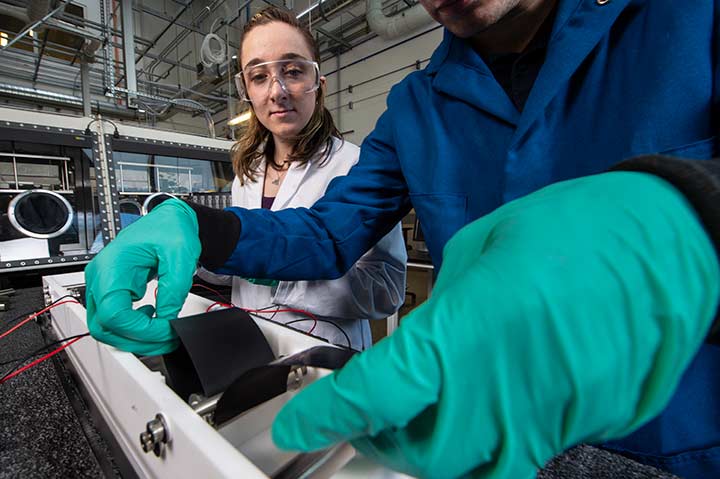
Submit Your Ideas for the Battery Recycling Prize
NREL is administering the U.S. Department of Energy (DOE) Lithium-Ion Battery Recycling Prize—a $5.5-million prize competition that incentivizes American innovators and businesses to develop and demonstrate safe and economical processes for collecting, sorting, storing, and transporting discarded or spent lithium-ion (Li-ion) batteries to facilitate a 90% recycling rate. Check out the informational webinar to learn about the competition's rules and scope. Submit your unique idea before the August 1 deadline. Read about NREL's work on Li-ion battery recycling.
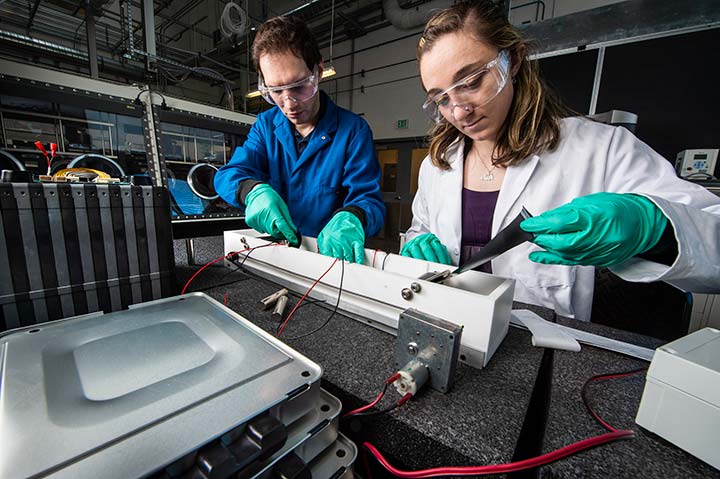
Researchers Working to Improve Recyclability of Renewable Energy Technology
Li-ion batteries are expected to become more ubiquitous as the demand for electric vehicles increases. To improve the ease of recyclability of these batteries, NREL is collaborating with Argonne National Laboratory, Oak Ridge National Laboratory, and several universities as part of the DOE ReCell Center. To learn about how NREL researchers are working to ensure that Li-ion batteries and photovoltaic panels are easier to recycle at the end of their useful life, read this feature story.
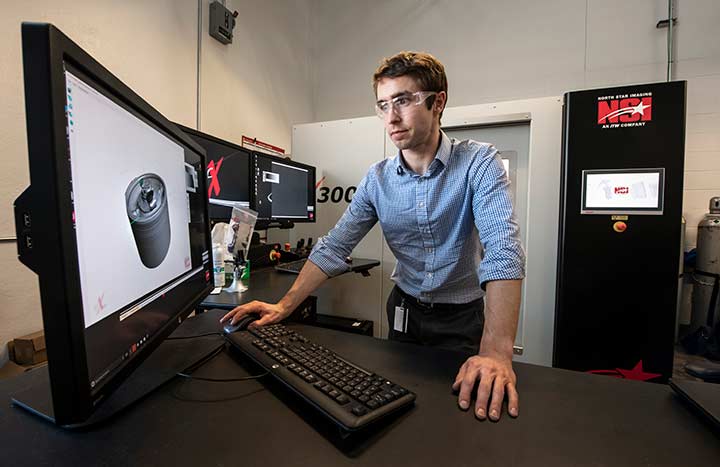
Researcher Demonstrates 3D Chemical Imaging of Lithium-Ion Battery Electrodes
In the first demonstration of its kind, NREL energy storage researcher Donal Finegan used an innovative technique to capture 3D images of gradient changes occurring in operating Li-ion battery electrodes on a micrometer scale. An American Chemical Society journal article, published by the American Chemical Society, details the technique and the findings. NREL researchers hope these small-scale images will lead to a better understanding of battery degradation over time. To learn more, read the NREL news release.
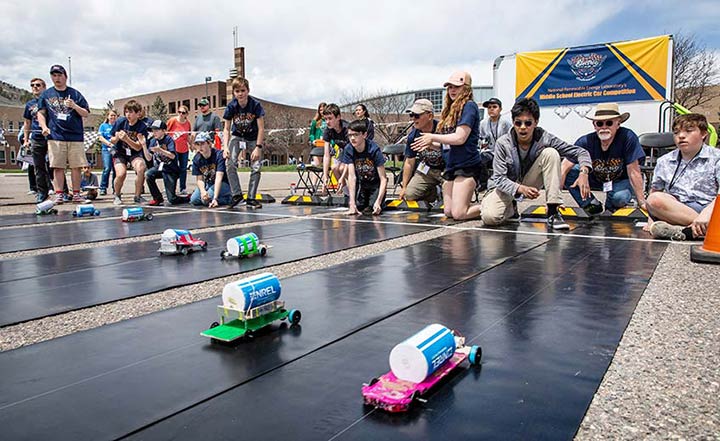
Ready, Set, STEM! Students Race for Success
Middle school students from across Colorado recently put their science, technology, engineering, and math (STEM) knowledge to the test as they raced model electric vehicles at NREL's 29th Middle School Electric Car Competition. With guidance from their teachers and coaches, 232 students from 19 schools constructed cars powered by solar panels or lithium-ion batteries. NREL volunteers judged the cars on speed and design. The annual event is one example of NREL's many efforts to inspire and engage students who will become the STEM workforce of the future.

NREL Behavioral Scientist Hosts Workshop on the Dynamics of Urban Electrification
Since joining NREL last year, Paty Romero-Lankao has been a dynamic force in integrating the social sciences into the more traditional engineering approaches to mobility research. She recently hosted a two-day workshop for professionals from diverse scientific domains—from engineering and applied mathematics to the social sciences—to explore the system-scale dimensions of urban electrification. Stay tuned for a pending white paper on the topic. To learn about her behavioral science perspective on the interactions among people, mobility, the built environment, and energy systems, as well as their resilience to disruptive events, read Paty's researcher spotlight.
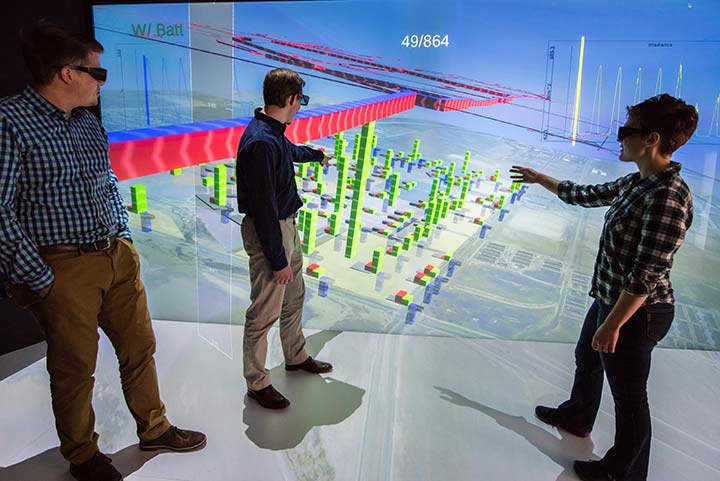
NREL Partnership Helped Establish Peña Station NEXT Zero Energy Campus
Last fall, NREL—in partnership with Xcel Energy, Panasonic, Denver International Airport, and LC Fulenwider, Inc.—helped complete the construction of the Peña Station NEXT zero energy campus near the airport. One of NREL's 850 or so active partnership agreements, the 18-month, transit-oriented project combined the lab's building energy system model, URBANopt, with grid modeling software, OpenDSS, to model the interaction of the district with the grid. To integrate electric vehicles into the district's load profiles, NREL transportation researchers examined driving behavior data and projected electric vehicle charging loads. To learn more about Peña Station NEXT and other NREL partnerships, read this feature story.
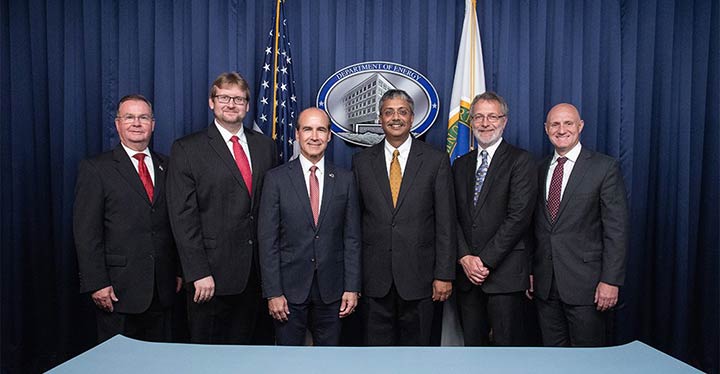
Ten-Year Research Agreement with ExxonMobil to Help Reduce Biofuel Emissions
ExxonMobil, NREL, and other DOE-funded laboratories recently announced the largest partnership in NREL's history—fostering large-scale collaborative research projects with the potential to improve energy efficiency and reduce emissions on a global scale. The projects include fuels research and an analysis of how biorefinery designs can affect multiple environmental sustainability objectives, such as reducing emissions in the transportation sector. To learn more, read the NREL news story.
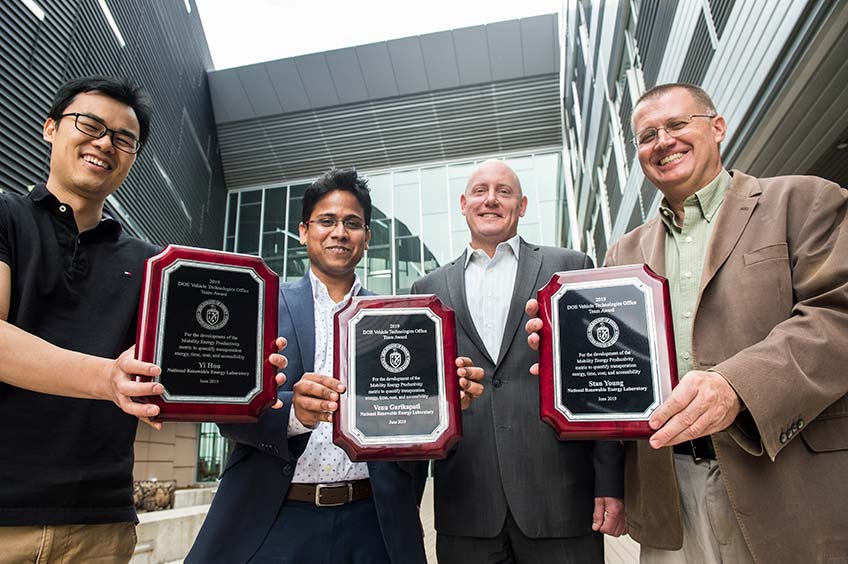
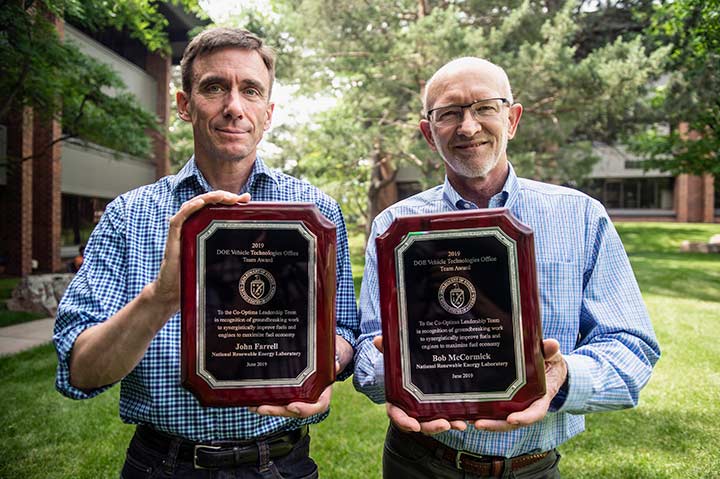
Research Teams Garner DOE Awards at Annual Merit Review
DOE honored two NREL research teams for their outstanding achievements at the Vehicle Technologies Office's Annual Merit Review. Venu Garikapati, Stanley Young, and Yi Hou received a team award for their creation of the mobility energy productivity metric, a new method of quantifying the quality of mobility by considering transportation energy, time, cost, and accessibility. John Farrell and Bob McCormick were recognized as part of the multi-lab leadership team that oversees the Co-Optimization of Fuels and Engines initiative. The award honors the team's groundbreaking work to synergistically improve fuels and engines to maximize fuel economy. To learn more, read the NREL news story.
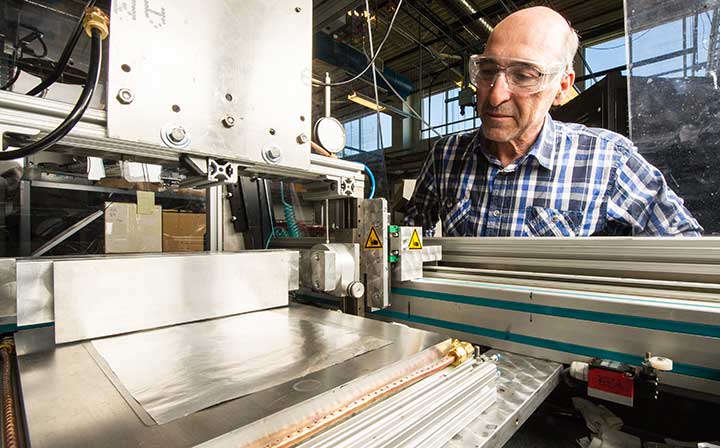
Get to Know Our Team: Ahmad Pesaran
Ahmad Pesaran joined NREL in 1983 and today serves as the chief energy storage engineer in NREL's Transportation and Hydrogen Systems Center focusing on battery recycling, battery manufacturing, and low-cobalt cathode development projects. Before moving into his current position, he managed NREL's energy storage research team, which accelerates the development of high-performance, cost-effective, and safe energy storage systems for electric-drive vehicles. He earned his Ph.D. in mechanical engineering from the University of California and has co-authored more than 100 technical publications on energy storage and electric-drive vehicles.
In the News
NREL's Vehicle Technology Integration team maintains the Alternative Fueling Station Locator, first on the Forbes list of handy apps that wouldn't exist with government open data.
Representatives from Centrica Business Solutions came to NREL to study hybrid energy storage, opening up new possibilities for cost-effective applications of both new batteries and ones recycled from electric vehicles. To learn about the research partnership, read the PR Newswire article.
Must Reads
Drivers and passengers alike can agree, the less time spent fueling the better. For plug-in electrics, direct-current fast charging could be the answer, but cost might be a barrier. An Applied Energy article explores an array of cost-saving technical solutions.
If you looked inside a charging battery, what would you see? Particles expand, shrinking the space between them. This changes the way the battery behaves. A model described in a Journal of the Electrochemical Society article gives researchers a window into these changes to explore optimal charging rates and battery composition.
With transportation representing the largest source of U.S. greenhouse gas emissions, some taxi companies and ride-hailing services are taking a critical look at their cars. NREL researchers helped them study the feasibility of electrifying their fleets by examining 4.9 million miles of real-world driving data, as described in a SAE International article.
Did You Know?
NREL researchers will be at the Automated Vehicle Symposium in July. Look out for Jinghui Wang's presentation on route optimization for automated electric vehicles in ride-hailing service.
Share

